From the VeloceToday Archives, January 2015
Review by Pete Vack
Photos from the book unless otherwise noted
Alf Francis–Racing Mechanic****
G.T. Foulis & Co., LTD. London, 1957
Hardbound, 330 pages
A question our readers may have is, why are we reviewing a book which, on the surface, is about an “English” racing mechanic (Francis was born in Poland, moved to Great Britain; his real name was Alfons Kowaleski), who gained fame for maintaining Altas and H.W.M.s, (both British cars)?
First, on its own, the book is a treasure. Motor racing books, in fact automotive books in general, are not usually referred to as a “good read”, much less a page turner. This one is. The combination of the outspoken and often stubborn Francis and the efforts of Peter Lewis, who at the time was the Motor Racing Correspondent of “The Observer”, creates a vivid, hilarious, and evocative look at racing on the continent in the early 1950s. It is full of not only human stories, but of mechanical woes, and written so well it is almost impossible to put it down.
Second, the British car content, though significant, is by far overshadowed by the descriptions of racing in Italy and France. And in addition to being the chief mechanic for John Heath, Francis maintained the Whitehead Ferrari F1 car for the 1952 season, and in 1954, was working with the Maserati factory to ensure that the Moss “Green Maserati” was up to the usual Moss/Francis expectations. The tales of the 1954-5 season alone are worth the price of the book.
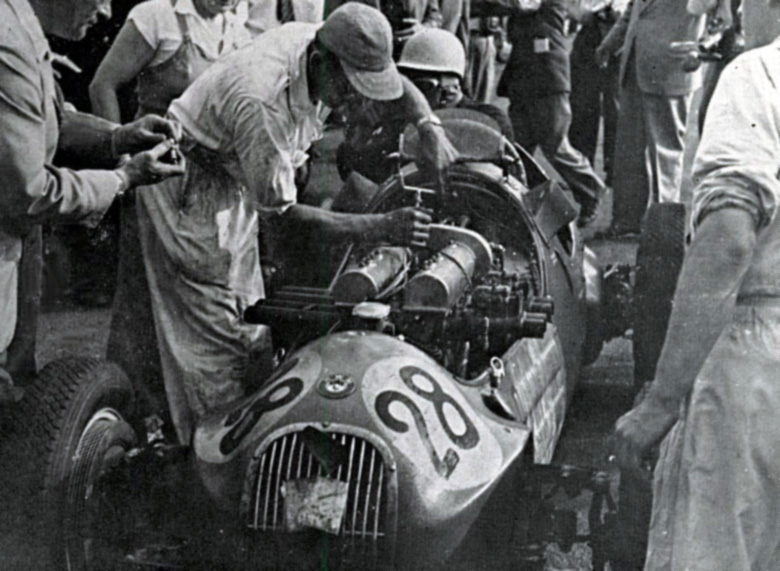
Zandvoort 1952; Alf changes a plug on the Moss H.W.M. handed to him by Alfred Moss. Good PR for Heath.
Alf Francis began his career as a motor racing mechanic, when in 1948, he answered a newspaper ad and applied as a mechanic to John Heath. Despite never having worked on a race car, he was hired, as his resume offered a real plus. Francis was fluent in several different languages, and Heath wanted to go racing on the continent. Francis would be not only the chief mechanic but a team manager who would make all the arrangements necessary for getting a team of racecars through France, Italy, and Germany.
Initially drafted to work on Geoffrey Taylor’s GP Alta, Francis soon became involved in the creation of the H.W.M. Alta, then, by 1950, a complete run of cars to compete in the new Formula 2. During the winter a team of four people worked to construct the cars, working 16 hour days seven days a week. The amount of work was all-encompassing. “We never thought or talked of anything else, not even on those rare occasions when there was time to sit down and have a quiet cup of tea.” The conditions at best were primitive, and the base of knowledge of engineering or suspension was so small, at first Francis didn’t even comprehend the essentials of power-to-weight ratios.
Once completed, Francis hauled the cars through France, and over the Alps (no tunnels then) in a flathead Ford powered truck, prepared them, managed the team and repaired the inevitable damage. Enroute to the 1950 Rome Grand Prix, Francis drove through the Mt. Cenis Pass, got totally lost in Turin, getting help from the Police to find their way out. In Genoa they got lost again, only two have the transporter die on a tramway track. Along came a tram, and all the passengers got out and helped push the truck several hundred yards to safety. “As one Italian explained to me: ‘We like to help you because you have racing cars. And anyway we want to get home!'” Francis had more adventures on the road than the drivers did on the track and describes them with both joy and cynicism. Like many, Francis fell in love with the Italians, though he would never have said it that way.
H.W.M. had employed a young man named Stirling Moss, who in turn recognized Alf’s abilities, and when the Moss family purchased a new Maserati 250F (serial number 2508) in early 1954, Francis went to work as the Moss Equipe chief mechanic. “I did not know that I should cover over fifteen thousand miles in the Commer van during that memorable 1954 season, cross the Channel nine times, negotiate the mountain passes of the Alps fifteen times, and cross more than thirty international frontiers in order to deliver the Maserati safely to fifteen major meetings in seven European countries”. Arriving at Maserati to coordinate the preparation of the Moss Maserati (seat position, pedals, paint, tires, were all different on the Moss car) Francis met and established lifelong relationships with both Guerino Bertocchi and Fantuzzi. Although the Moss Maserati was an independent, Maserati supported the equipe as if a factory car, for they knew that Moss was by far the best Maserati driver, yet still too inexperienced in F1 to drive for the factory.
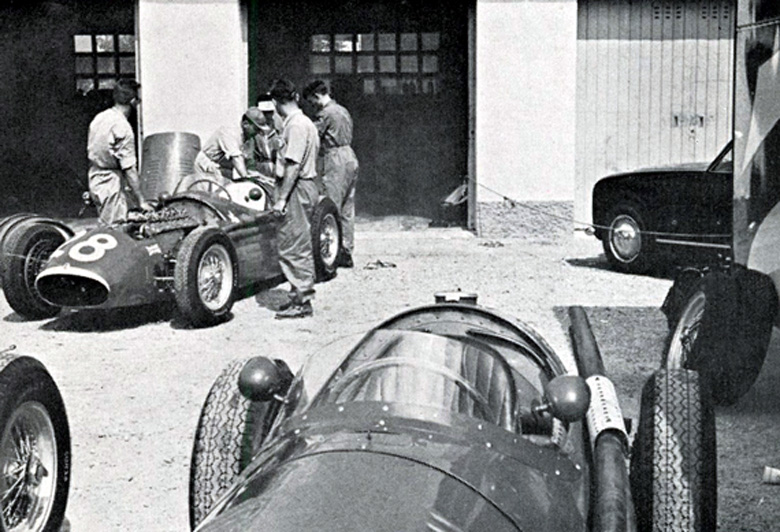
At Monza in 1954, Bertocchi checks the fuel on the Moss Maserati which so nearly won the race. Despite retiring, Moss came to the attention of the Mercedes-Benz team.
Francis had some interesting insights as to the fate of the 250F effort after Moss rather unexpectedly bolted to Mercedes Benz in 1955. “In my opinion, what Stirling did had far-reaching consequences. Had he stayed with Maserati during 1955 I am convinced there would have been a very different approach to the sport that season by Signor Orsi. He might have even produced the V8, but naturally an organization like Maserati is not going to spend a lot of money on development of such a power unit unless there is someone ..(as good as Moss).. to drive the car.”
Francis went on to develop the Rob Walker F2/F1 Cooper Climax, which in turn led to him working again with Moss. But the book stops in at the end of 1957 season. Francis would also be involved in the ATS GT, but Alf Francis–Racing Mechanic, would be, unfortunately, the only book by that unique and colorful Pole.
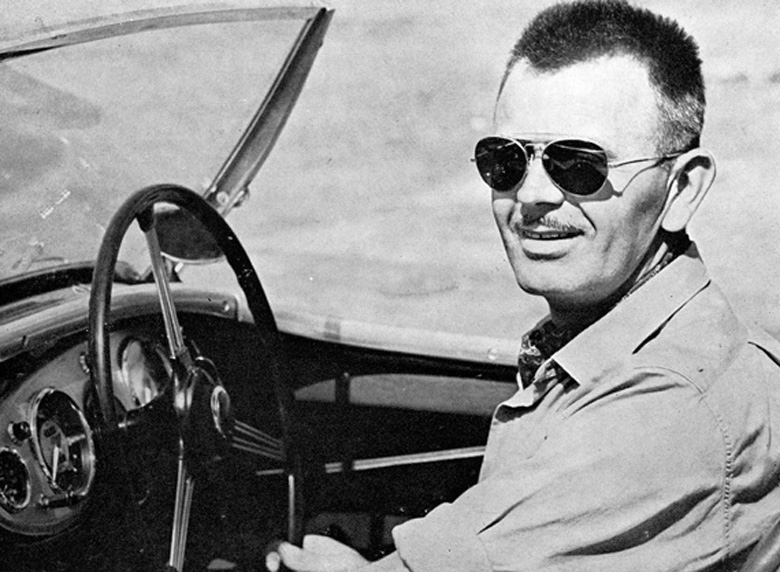

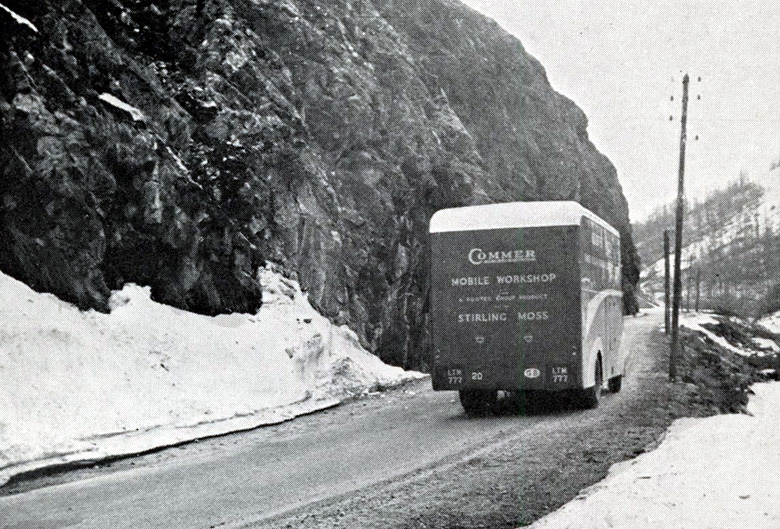
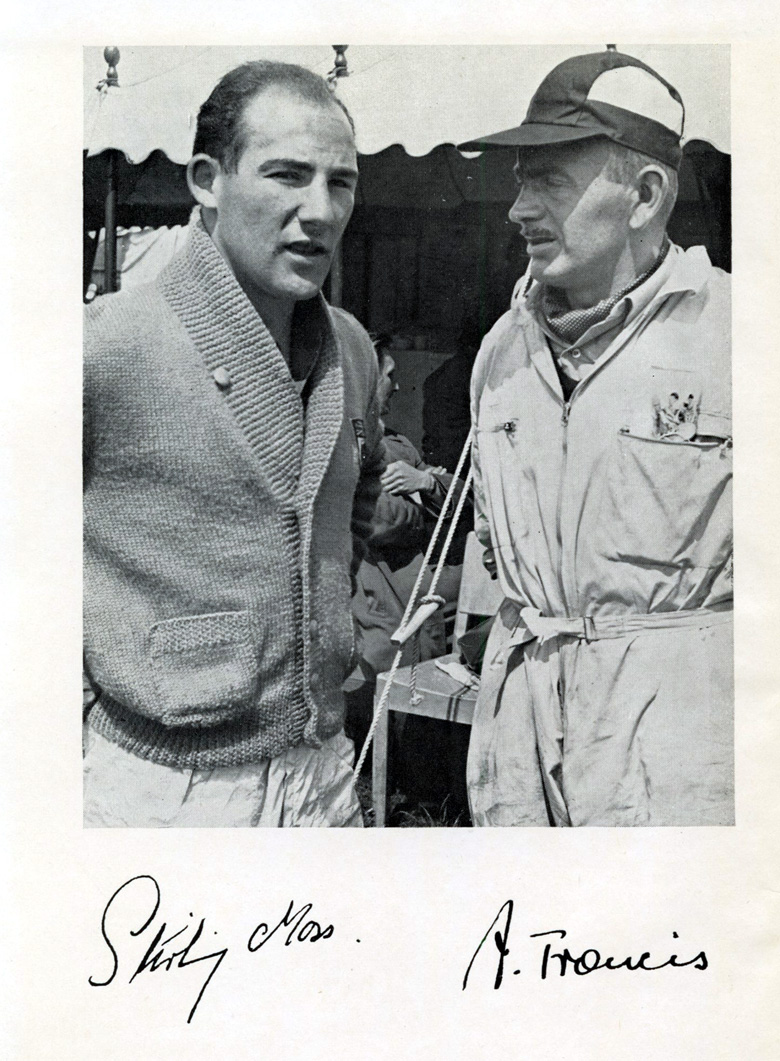
I am sure his mod in chopping chassis bits around to fit V8 engine in what was already a pretty flexible Lotus 18 frame didn’t help Stirling Moss lead to having a longer career.
I read the book many years ago, it reminded me then of somebody’s daydreaming .
I’m surprised its still around . Baz Australia
I recently decided to ‘Dip Into’ the Alf Francis book and ended up reading it from cover to cover for the umpteenth time!.
Many years ago I was on a flight from Rome to London and opened my new book, ‘Alf Francis – Racing Mechanic’ to while away the hours. The frontispiece had a photograph of Alf. I turned from the book to the chap sitting next to me and he said “Yes, that’s me”. I don’t think I got much reading done after that.
An absolute must read book.
I bought this book over 50 years ago and I still treat it as one of my treasured books. It is so readable and covers more than just race reports with details of many side issues related to the running of racing teams. I have read it two or three times and I still pick it up and re-read sections with great interest. A fantastic book and a must read for anyone interested in motor racing in the 1950’s.